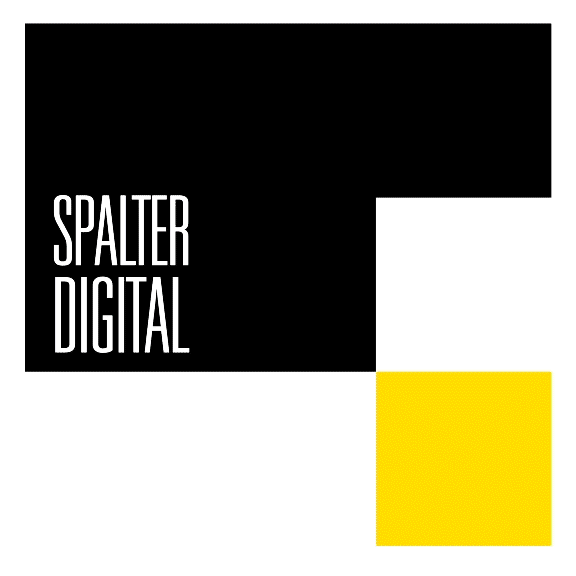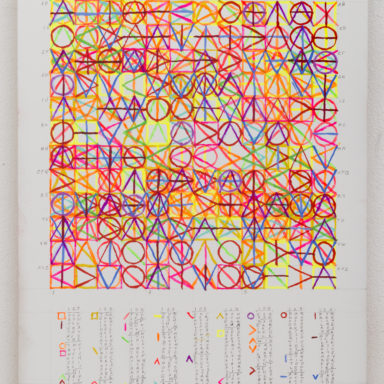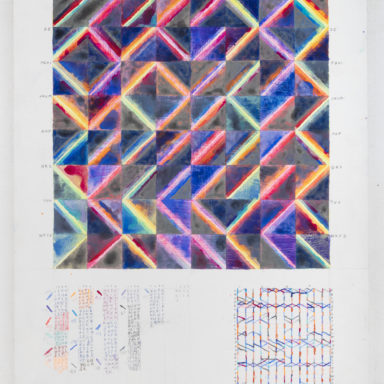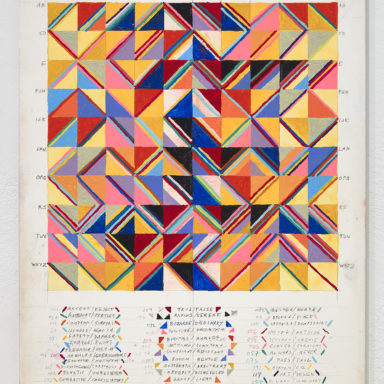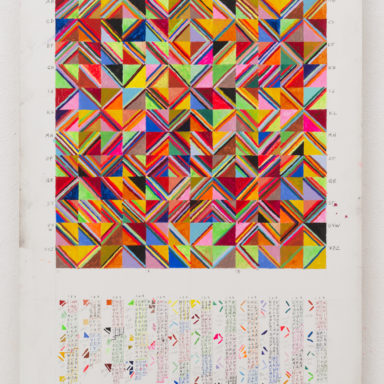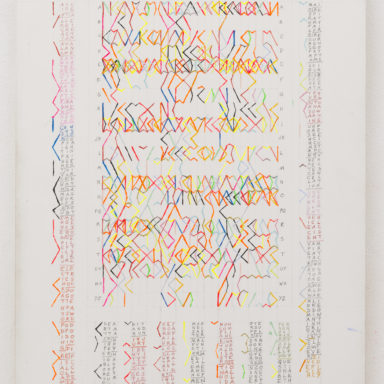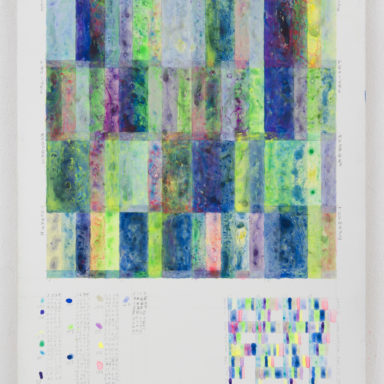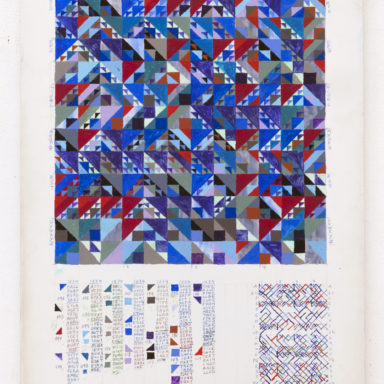Basic Info
Name: Leslie Roberts
Country of Origin: US
Description
Leslie Roberts (born 1957, Goldsboro, NC) is a Brooklyn-based artist who maps language into geometric color structures. She has exhibited throughout the US for three decades, with recent solo shows at Brooklyn’s Minus Space. In 2020 she was included in SUM Artists: Visual Diagrams and Systems-Based Explorations at the Wellin Museum, Hamilton College, Clinton, NY. Her work has been shown at New York’s Pierogi, McKenzie Fine Art, Tiger Strikes Asteroid, Davidson, and PPOW galleries; at the Weatherspoon Museum, Greensboro, NC; and at the Brooklyn Museum, among other venues. An interview was included in New York Studio Conversations II, 21 Women Talk About Art by Stephanie Buhmann (Green Box, Berlin, 2018.) She has had residencies at Yaddo, Ragdale, and Virginia Center for the Creative Arts. Other awards include Yale’s Ethel Childe Walker Prize for Art, Yale’s John Courtney Murray Fellowship for independent work abroad, and Faculty Development Grants from Pratt Institute. Roberts holds an MFA from Queens College, CUNY and a BA from Yale College. She also attended the New York Studio School and the Skowhegan School of Painting and Sculpture. She is a professor at Pratt Institute, where she teaches Foundation Light Color & Design.
ABOUT THE WORK
Leslie Roberts translates ephemeral language into color abstraction, in works that are diagrams of their own making. Using self-devised rules, she maps handwritten words into algorithmic structures of ink, pencil, and acrylic gouache.
Roberts collects fragments from the flow of information through our lives and our screens. She sorts her notes into lists, and transcribes them in columns on slate-like gessoed panels. Each panel contains a list. The letters of each entry on that list (word, phrase, or sentence, as the case may be) are mapped along numbered and lettered X and Y axes, using a given rule and color for each entry. On some panels, the same text is diagrammed twice, using the same colors, but applying different rules. Varying systems involve lines, shapes, clusters of dots, or layers of wash, resulting in generative forms that can recall digital code, ancient glyphs, woven textiles, and musical scores.
Some paintings’ lists document a journey or place. Others are mismatched lexicons of contemporary vernacular: rosters of disparate instructions, acronyms, text messages, headlines, or other scraps of found language. The writing and notations are a resonant fine print, integral to the optical systems they produce.
